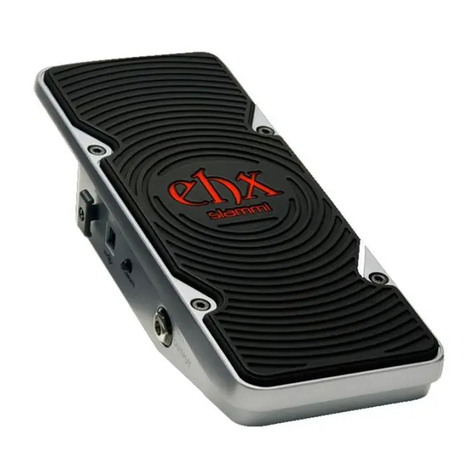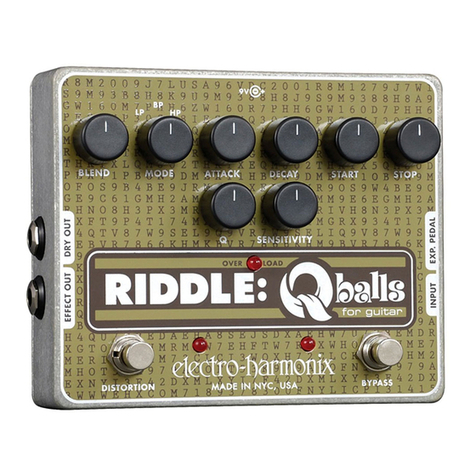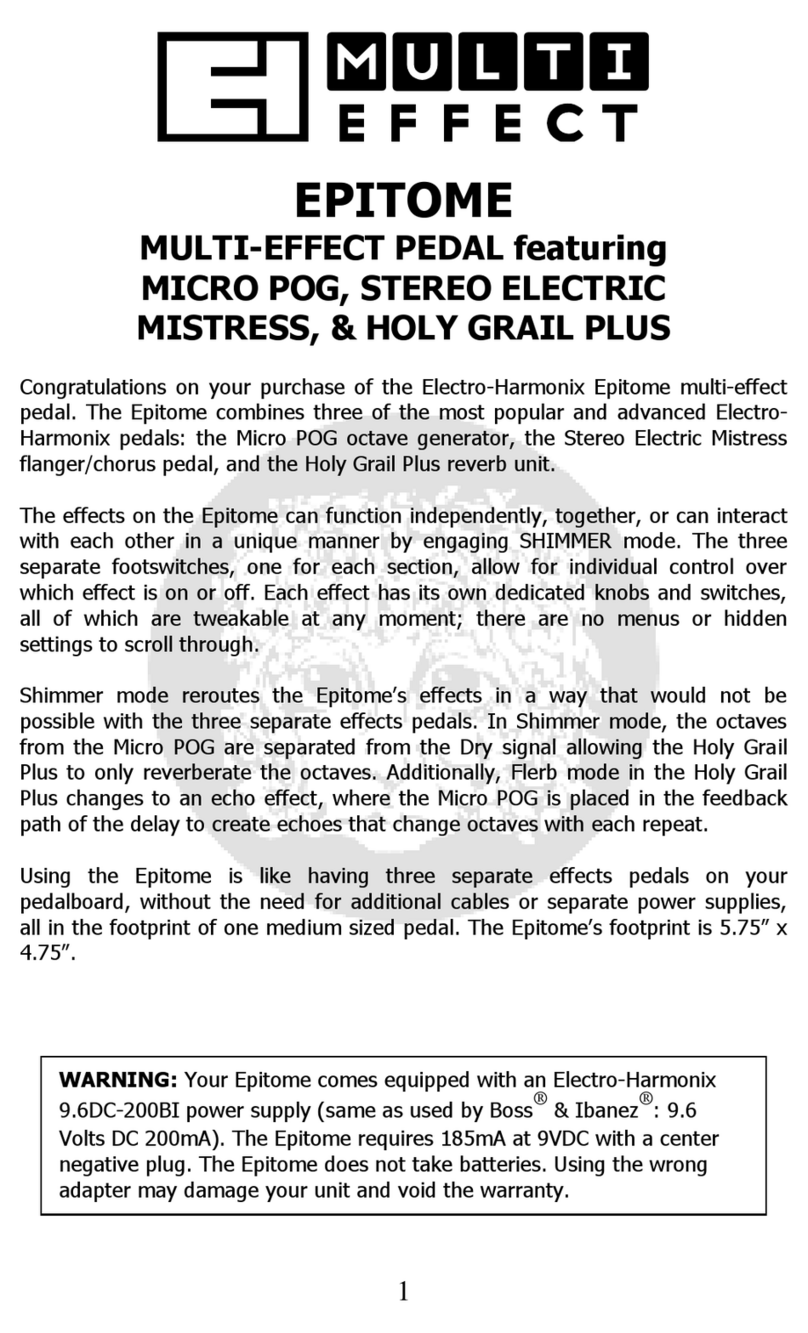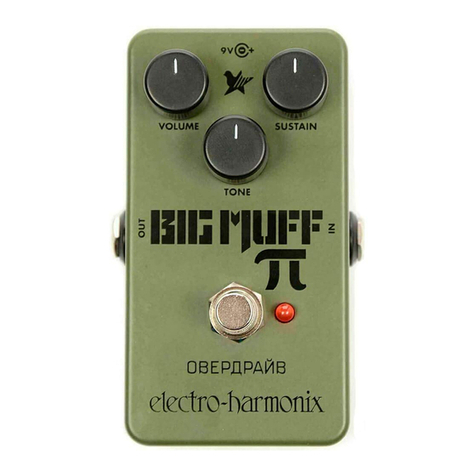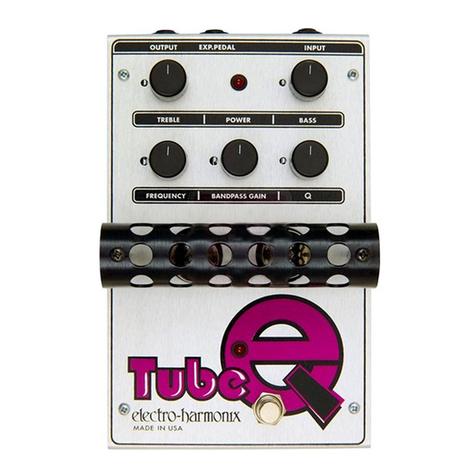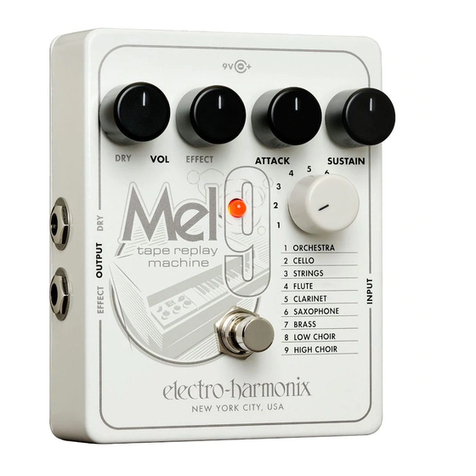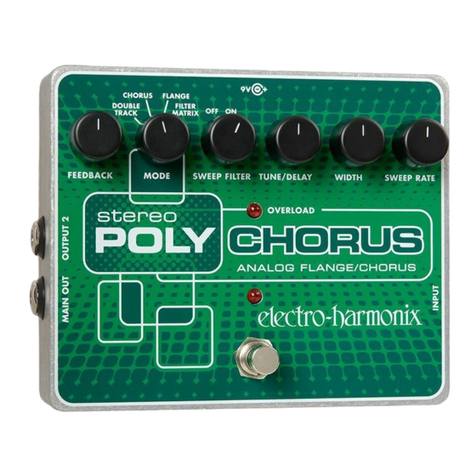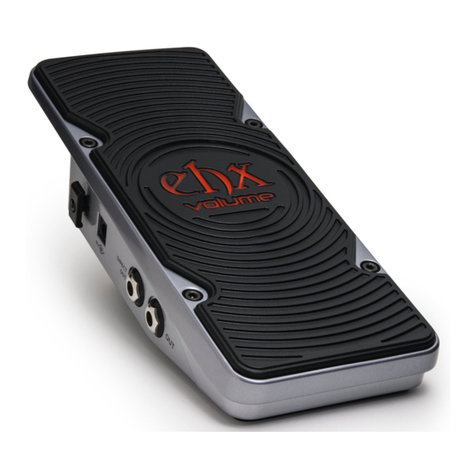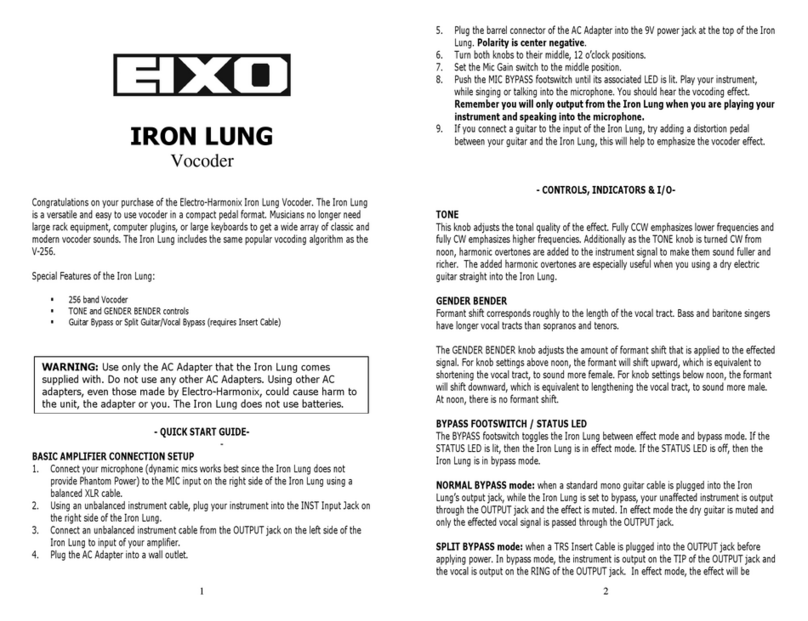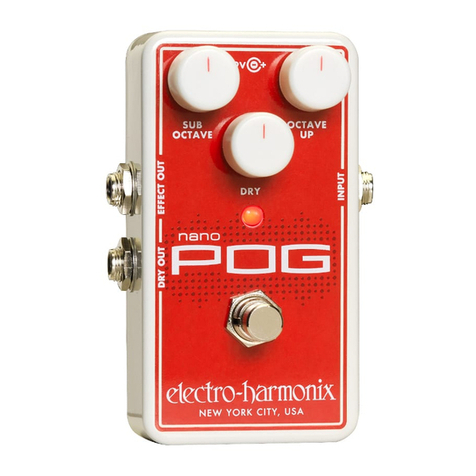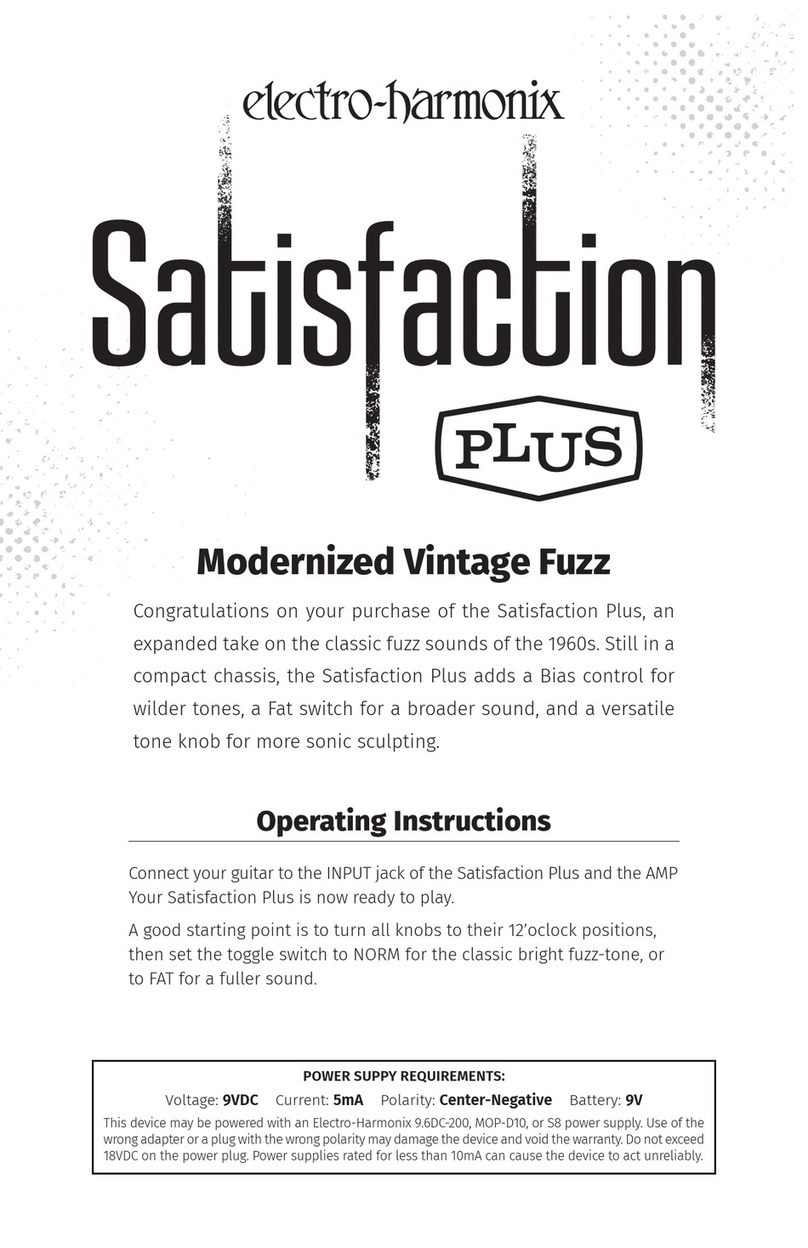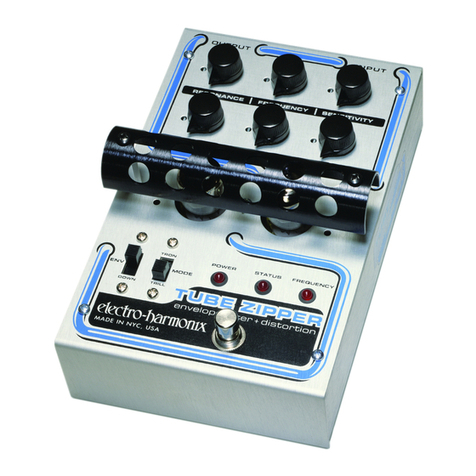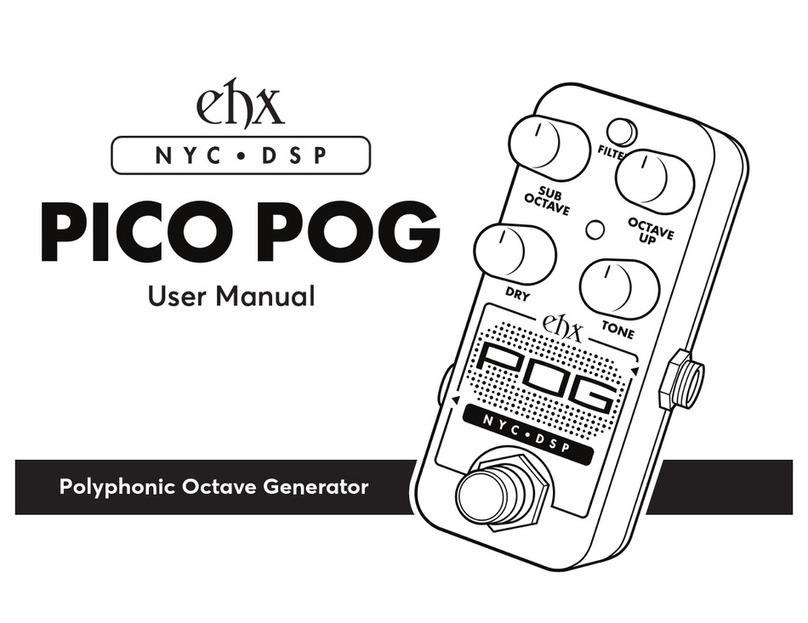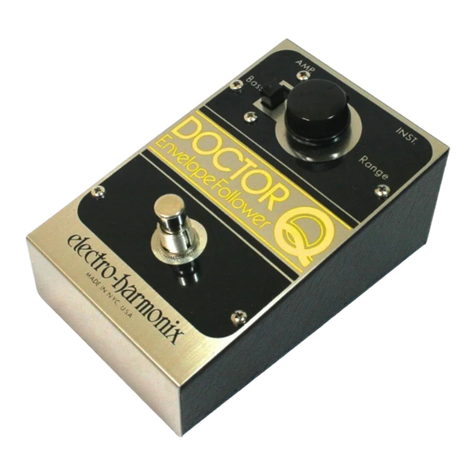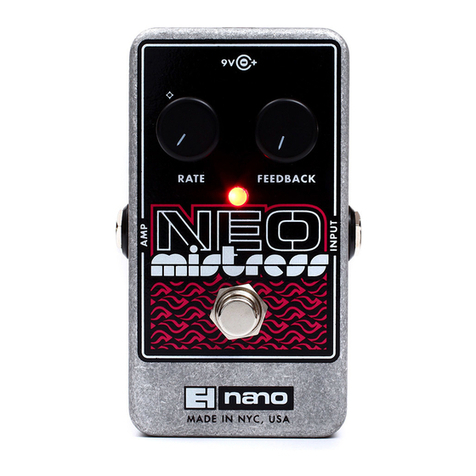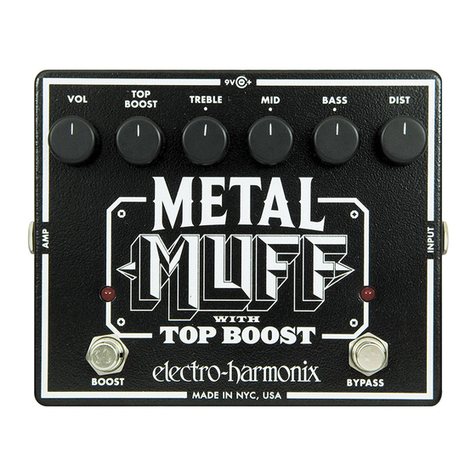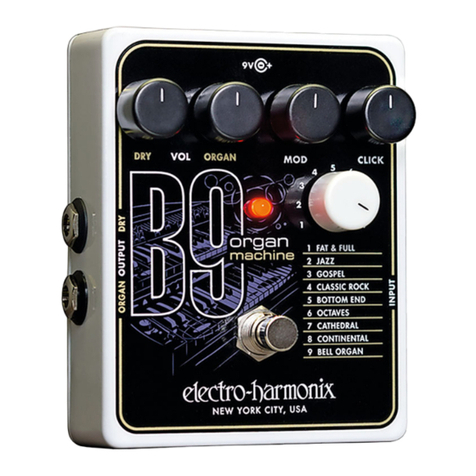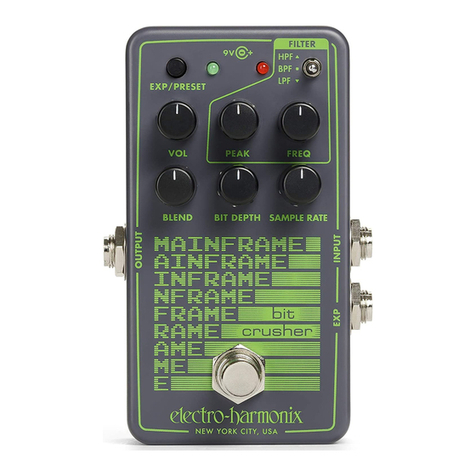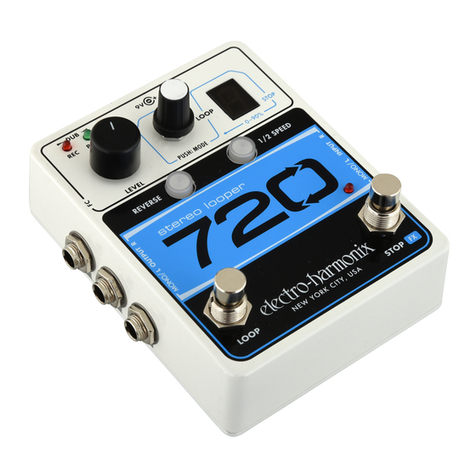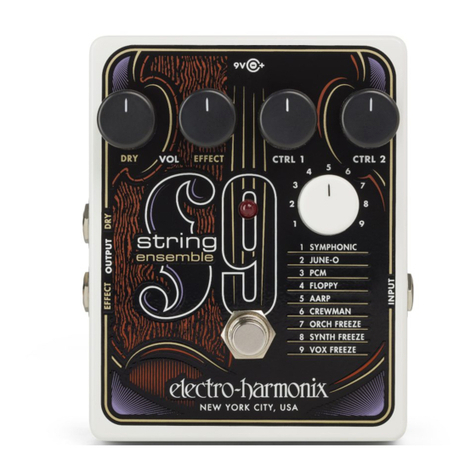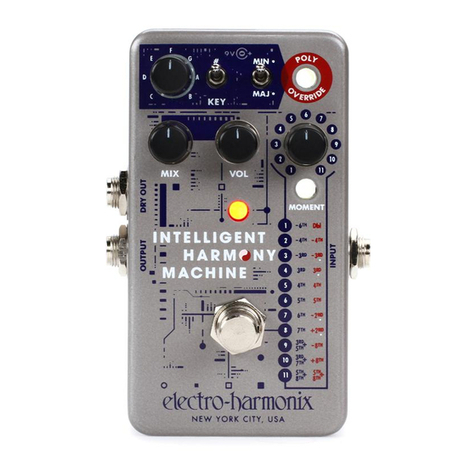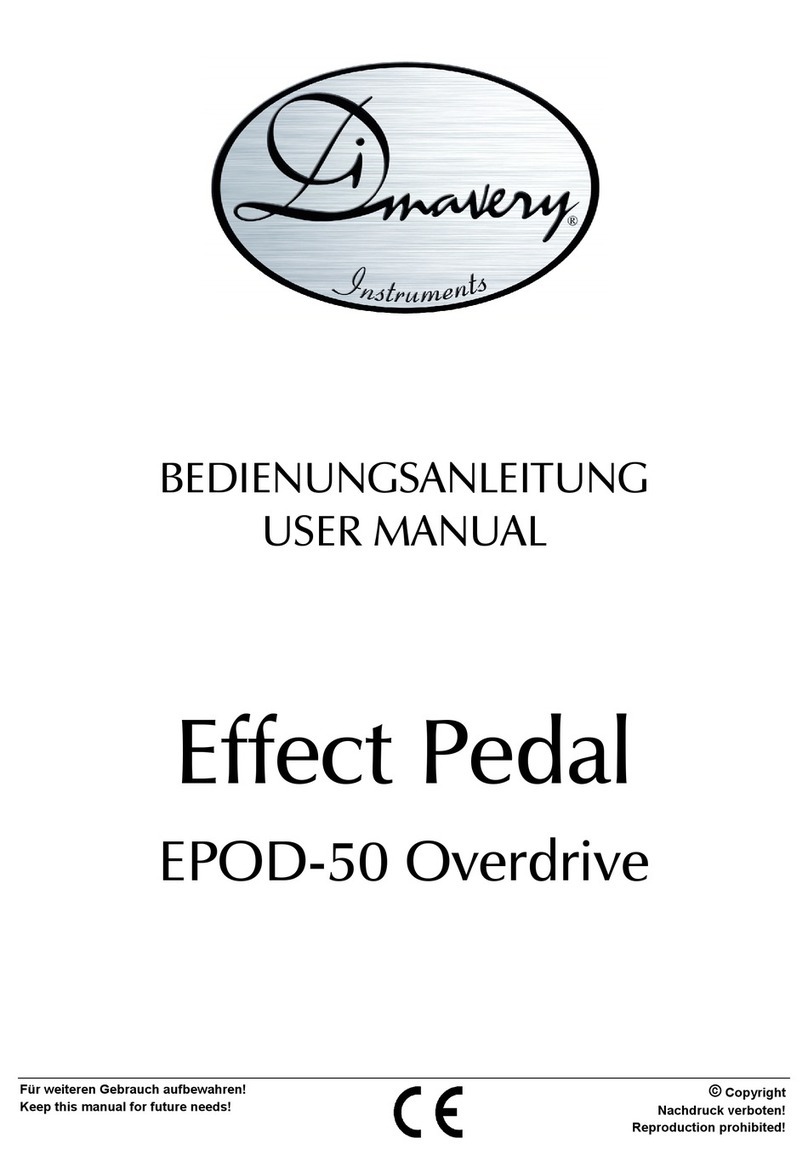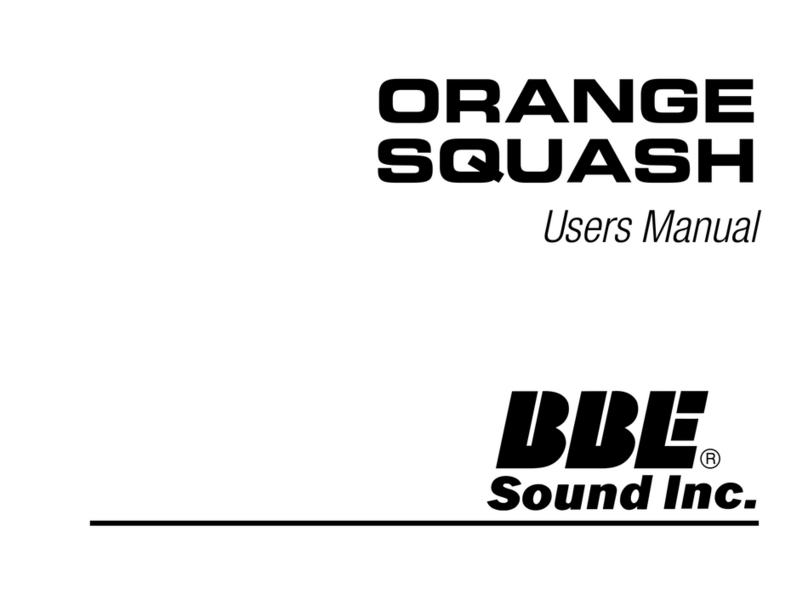
MODE – This is a rotary switch used to select between the 3 filter modes available
on the ENIGMA. Select between LP (low pass), BP (band pass), and HP (high pass)
modes to emphasize a different frequency band. Selecting between these modes
does not change the start and stop frequencies.
ATTACK – This knob controls how quickly the filter will sweep from the frequency
set by the “START” knob to the frequency set by the “STOP” knob. Fully CCW
will have the fastest attack setting and is good for quick percussive styles of playing.
Fully CW will have the slowest attack setting and creates a slower smoother sweep
for a bowed sound.
DECAY – This knob controls how sensitive the reset circuit is when falling back
from the “STOP” setting to the “START” setting. Fully CCW will have the most
sensitive reset. In this setting the sweep will reset the fastest and the easiest. Use
this when playing quick staccato notes to make sure every note triggers a new
envelope sweep. Fully CW will maximize the decay setting. Use a longer decay
setting when you don’t want every note to reset.
START – This knob sets the frequency that the sweep starts at. Fully CCW is the
lowest frequency (about 40Hz). Fully CW is the highest setting (about 3Khz). Use
this knob along with the “STOP” knob to set the range and direction of the sweep.
For example, a low “START” and a high “STOP” will sweep upward. A high
“START” and a low “STOP” will sweep downward.
STOP – This knob sets the frequency that the filter sweeps to. Fully CCW is the
lowest setting (about 40Hz). Fully CW is the highest setting (about 3KHz).
Q – This knob controls the resonance of the Q. Fully CCW is the widest bandwidth
and fully CW is the most resonant for a more dramatic effect.
SENSITIVITY – This knob controls the input sensitivity of the envelope filter
circuit. Fully CCW is the least sensitive, and the circuit will be less reactive to the
instrument input. Fully CW is the most sensitive and the circuit will be the most
reactive to the instrument input.
A NOTE ON INTERACTIVE CONTROLS:
The “ATTACK”, “DECAY”, “START”, “STOP” and “SENSITIVITY” knob are
highly interactive. If Attack is set to slow, the Decay is set to fast, or the Sensitivity
is set to low, the filter sweep may not reach the stop frequency. The lowest
frequency sweeps in the ENIGMA can be difficult to hear. If this causes the attack
to sound abrupt, tune the start position so the sweep begins at a more audible
frequency. All of the functions depend heavily on how the Sensitivity. Take some
time to become familiar with these knobs and functions and learn how they work
together to effect different styles of playing.
DISTORTION FOOTSWITCH/STATUS LED – This footswitch engages the
analog distortion circuitry in the ENIGMA. When distortion is engaged, the LED
will turn on, and when distortion is disengaged the LED will turn off. The intensity
of the distortion is controlled by the “SENSITIVITY” knob. Inside the pedal there is
a Trim Pot labeled “DISTORTION LEVEL”. This can be adjusted by the user to
fine tune the volume of the distortion when engaged. This will not affect the gain or
intensity of the distortion. DO NOT adjust any other trim pot on the board as they
have been carefully calibrated for optimum performance.
EXPRESSION PEDAL INPUT – An optional expression pedal can be used with
the ENIGMA for manual control of the filter. When the pedal is in toe up position,
the frequency will be at the “START” position. In the toe down position, the
frequency will be at the “STOP” position. Use this along with various “Q” knob
setting to get resonant filter sweeps as well as wah-wah sounds with a versatile
range.
BYPASS FOOTSWITCH/STATUS LED – The footswitch engages/disengages the
effect. If the effect is engaged, the LED will light up. When the effect is disengaged,
the LED will turn off, and the pedal will be in true bypass.
INPUT Jack – Connect your instrument’s output to this ¼” mono jack. The input
impedance presented at this jack is 710Kohms
EFFECT OUT Jack – Connect this ¼” mono jack to your amplifier’s input. The
output impedance presented at this jack is 300ohms.
DIRECT OUT Jack – This is a direct out signal from the input. This signal does
not go though any of the effects circuitry.
CAUTION: This pedal was designed to give the user the maximum potential for
user customizability and there are some setting combinations that are extreme. If the
Q setting is maxed, at the peak high and low frequency this pedal can be
INCREDIBLY loud.
- WARRANTY INFORMATION -
Please register online at http://www.ehx.com/product-registration or complete and return the
enclosed warranty card within 10 days of purchase. Electro-Harmonix will repair or replace, at
its discretion, a product that fails to operate due to defects in materials or workmanship for a
period of one year from date of purchase. This applies only to original purchasers who have
bought their product from an authorized Electro-Harmonix retailer. Repaired or replaced units
will then be warranted for the unexpired portion of the original warranty term.
If you should need to return your unit for service within the warranty period, please contact
the appropriate office listed below. Customers outside the regions listed below, please contact
EHX
Customer
Serv
ice
for
information
on
warranty
repairs
at
[email protected] or
+1-718-937-
8300. USA and Canadian customers: please obtain a Return Authorization Number (RA#)
